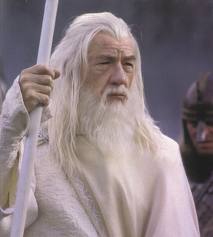What to Do When the Very Worst Happens
I have a young colleague whom I’ve been quasi-mentoring over the past several years. She’s brilliant, obsessively hard-working, and (of course) doing way too much, all the time. However, she’s mastered each and every challenge up until now.

Woman crying. Photo by Elmo Malik.
She’ll master this one as well, but boy – is it a whopper!
This one counts as a betrayal, at the deepest level possible.
A Betrayal that Cuts to the Very Core
There’s betrayal at a superficial level – the sort that, in retrospect, becomes almost laughable. At least, you can make a good story about it.
The Ones Where You Can Deal
- A casual business associate screws you over on a deal. We’re talking about an associate here – someone with whom you may have set up a deal, but not a whole-life partnership. Yeah, it’s rough. But the person has shown their true colors, you know to avoid that one in the future, and you can recover and move on. More or less easily.
- A trusted friend or family member divulges a confidence. Again, awkward, embarrassing, a lot of mess to be cleaned up. You may be well and truly pissed; there might be some real discomfort for a while – but once again, you’ll recover and move on. Again, more or less easily.
- A professional colleague, with whom you’ve too candidly shared your latest breakthroughs, publishes your work ahead of you. You succumbed to this person’s way-too-flattering interest, divulged over drinks much more than was wise, and now you’ve been good and truly scooped – on something that took you years of work.
All of these are instances where your ego-self gets into an uproar, and dealing with the fallout will take days, maybe even weeks or months. But all in all, you’re still you; the other person has simply shown themselves for what they are, and – other than being more careful in the future – your life is not too horribly impacted.
So. This is not the kind of betrayal that we’re discussing in this blog. These are way too easy.
The Ones that Shake Your Core
Rather, we’re after the really hard, horrific stuff:
- The doctor or lawyer gives you the bad news. Then, you discover that your best friend and your husband/wife/significant other have been carrying on an affair — for quite some time. Now, you’re dealing with a mega-crisis, and your closest emotional support (yes, both of them) are off a trip to Tahiti. This is bad. Really, really bad.
- A business partner defrauds your customers, cleans out the bank account, and flees the country. You’re left to deal with furious clients (who themselves feel betrayed), a swath of legal actions, and no money. Again, this one is really, really bad.
- Your trusted mentor/advisor/business coach – or conversely, your most dedicated, long-term student (your disciple) – steals your work. Or they make sexual advances. Or they find some way to totally denigrate what you have done – and then reposition it as their own (brilliant) work. You’re left in a degree program or a work relationship from which it would be difficult (almost impossible) to move – you might be caught half-ways through your degree, or needing your advisor’s referral to get the next job – and who will people believe? A student/junior associate, or the esteemed teacher/business leader?
Get the drift? These are the betrayals that cut to the very core.
You gave trust. You let go of your own barriers. You welcomed input, feedback, honest criticism. And instead, you got used – in the most horrible way that you could imagine.
What’s worse – you’re caught in a situation from which there is no easy escape.
This is the kind of event that we’re discussing today.
My young associate emailed me about one of these hugely life-shaking experiences. She’s in the midst, as I write.
I’ve also dealt with at least one of these … maybe two? All three? (OK. Deep breath. Let’s just move on.)
First Steps

Cats bound for slaughter – rescued just in time. You think you got it bad. I know you do. Breathe. Just breathe. We’ll get through this. And read the accompanying story. It’ll give you some perspective.
The very first thing that you need to do is to breathe. Just breathe.
You’re in shock.
Your first instinct is to deny this. It isn’t real. It can’t be happening. Not to me. This is all a bad dream … it will just go away …
And no. It doesn’t.
Breathe, dear one. Just breathe.
We’re going to get through this, okay?
Take a long walk. Breathe some more. Get back into being in your body; being who you are, being yourself again.
You’ll survive this thing. Okay? I promise you.
Once again, breathe.
Next Step: Strategy
I told you (in the header above) that we were going to do some strategy.
But wait. You’re not ready yet. Your ego-mind is still recoiling from attack.
You’re not ready to think strategically just yet. You’re still taking this way too personally.
Your first step – once you’ve dealt with the initial shock-wave – is to recognize that this is not really about you.
Your first lesson here is: Don’t take this personally.
I know, I know. It seems as though it’s completely about you. And at one level it is.
But you’re going to deal. You’re going to deal at several levels all at once. And to do this, you need to disassociate yourself from the sticky-goo that has you all bound up in the others; in their actions and your reactions.
So the first thing is: They are projections of your own mind. They are shadow-play. They are the demons that have lurked underneath your subconscious all this time. But they are not really about you, and you have to step aside from your own, immediate emotional response to all of this.
Go read Don Ruiz’s The Four Agreements. I’m sure you have a copy around the house someplace. If not, order it from Amazon, and read it tomorrow. Or get the Kindle download, and read it now.
Or check out this précis about Don Ruiz’s Four Agreements.
The point is – get ahold of Don Ruiz’s second lesson: Don’t take it personally. It’s really not about you.
Once you’ve done that – or even made some baby steps in that direction – you will have cleared your mind enough to be able to think straight. Until then, you’re caught up in sticky-goo, and you’re all about your own reactions. Which will have overtones, overlayers, and a whole lot of stuff that will keep you from being effective.
Because if you don’t separate yourself from your reactions, then you think you’re dealing with the situation, but you’re really dealing with the worst, least-processed, most-awful demons in your own mind – and then you’re projecting that stuff onto the situation, and you’ll make everything a whole lot worse.
So get your perspective right, first thing.
This is not about you.
Don’t take it personally, okay?
The Four Agreements by Don Miguel Ruiz
Paper
Kindle
Strategy: Taking Charge of Your Life
|
Paper
|
Kindle
|
|||
Strategy: Taking Charge of Your Life
If you’re serious about strategy, study the world’s greatest strategists.
I’ve had to learn to think and act strategically, and to do so, I’m studying Sun Tzu’s, The Art of War.
To learn more – go to Mourning Dove Press – which is all about strategy.
Start with the first blog, and work your way forward.
Getting a Grip on Things
I’m not going to tell you that things could be a whole lot worse. We’re dealing with a situation that – as far as you’re considered – already is the worst.
What I really want you to do is to not diminish this, or try to buck yourself up, or pretend that things are not as awful as they really are.
Because they are.
Got it?
We’re trying to do two things here – just to get started. One is to get back into yourself; to be present. The other is to be present without denying the awfulness of the situation.
Once again, breathe. Get your mind to accepting that this has happened; is happening; it’s what is going on.
You’re going to deal. You’re going to survive.
You’re going to get on top of this thing.
But first, we’re going to get some perspective.
Why Things Might Be Even More Difficult than You’re Thinking that They Are
There are several life-stages where you get a really huge, horrific challenge.
Most of us are familiar with the classic Hero’s Journey or Heroine’s Journey. The Joseph Campbell stuff. The monomyth. (For a fun YouTube vid on the monomyth’s main characters, check out this little Glove and Boots video on The Hero’s Journey.)
This is the one that gets resolved by fighting a duel-unto-death (if you’re a Hero), or by saying – and knowing – that You have no power over me (if you’re a Heroine).
Either way, you’re fighting a huge battle. The real challenge is that the villain is some aspect of yourself. (In Luke Skywalker’s case, Darth Vader turns out to be his father.)
So what’s worse than a duel-to-the-death with Darth Vader, you might ask?
Dealing with Darth Vader’s initial betrayal. (This is when he was your finest student and protégé.) Being killed by Darth Vader is, definitively, a whole lot worse than killing Darth Vader.
Because there is a monomyth beyond the monomyth.
This is when it’s not about the Hero anymore; it’s about the Hero’s mentor; his Hierophant.
Who – or What – Is a Hierophant?
If you’ve been following along, then already familiar with the notion of a Hierophant. If you haven’t, then – as a quick summary – a Hierophant is a guru/guide/mentor of the highest order.
A Hierophant is Obi-wan Kenobi, or Yoda. He’s Mr. Miyagi. He’s Professor Dumbledore.
(To learn more about how a Hierophant works in your life, go to the end of this blog, and follow the links.)
Your Mentor/Teacher/Guru/Guide Is on His Own Inner Journey
Because most of us identify with our own Heroic Journey – and because we’re all collectively a bit young on our journeys – we tend to get caught up in our Luke Skywalker roles.
We miss – entirely – the point that our Hierophants are on journeys of their own.
As young Heroes or Heroines, we emerge victorious from our journeys. We conquer our enemy. (Or at least, we proclaim that they have no power – and shift the nature of things altogether.)
The Hero’s (or Heroine’s) Journey Is About Victory; the Hierophant’s Journey Is About Sacrificial Death
Take a deep breath before we get into this one.
Just because as an archetype, the Hierophant (Gandalf the Grey, Obi-Wan Kenobi, Professor Dumbledore) dies to save his charges and complete his mission, does not mean that you are going to die.
These stories are allegorical.
That said, there is an ego-death involved.
We’ll go into the full sequence in a later blogpost. For now, it suffices to say that:
We’ve put so much attention on our emerging young Hero/Heroine that we – as a culture – have not yet traced the commonalities of our Hierophants (the Hero’s mentor and guide).
When we do so, we notice that – in many plotlines – they die in order to go to the next level.
- In Star Wars, Obi-Wan Kenobi dies in a duel with his former protégé, Darth Vader. (See the Obi-Wan Kenobi and Darth Vader duel YouTube clip. However, Obi-Wan’s essence continues onward. (See the YouTube clip: Use the Force, Luke!)
- In the last Harry Potter story, Professor Dumbledore dies in the scene with Draco Malfoy. (See this YouTube clip of Professor Dumbledore’s death in Harry Potter and the Deathly Hallows.) However, we know that Professor Dumbledore did not really allow Draco to kill him; he arranged that Professor Snape should do the deed, so that young Draco’s soul would not be sullied. Once again, we’re seeing a sacrificial death.
- In The Lord of the Rings, Gandalf the Grey realizes the full betrayal of Saruman. (See this YouTube clip of Gandalf’s battle with Saruman from The Fellowship of the Ring.) However, his essence continues onward. (See the YouTube clip showing Gandalf’s battle with the Balrog, and his death – and transformation into Gandalf the White. Gandalf’s heroic challenge as Gandalf the Grey to the Balrog are You shall not pass! Read Gandalf’s story in the Lord of the Rings wiki.
You Are Being Transformed into Something Greater than Yourself
If you are going through this kind of mega-crisis, then something very huge is going on in your life.
You are more than a Hero/Heroine, and you are even more than a Hierophant. You are becoming something greater than that. You are becoming Gandalf the White instead of being Gandalf the Grey.
If you are going through a betrayal of the deepest level, you are going through one of the deepest life-challenges that you will ever encounter.
You are doing the highest level of soul-work.
You will survive the situation, because your life is real-in-this-plane; not allegorical.
However, you are undergoing an ego-death.
Understanding that you are going from Gandalf the Grey to Gandalf the White is one of the very few things that will help you grasp and make sense of this situation.
Otherwise, it would seem to be a comedy of the absurd. There might not be any reason to go on.
But there is a reason. The reason is that you are being transformed. You are being purified. All of the “grey” in you is being purified in the Balrog’s fire.
You emerge – not as a strong ego-self (Hero or Heroine) – but as something even more. You are more, even, than a Hierophant. You have become something that is not often named in our culture; we really don’t have a handle on this yet.
Obi-Wan Kenobi did it.
Professor Dumbledore did it. Gandalf did it.
So did Jesus the Christ.
Meditate on this, dear one.
It may bring insight and understanding in your darkest hour.
Remember, also, that prayer is effective, and that you can draw on resources greater than yourself. Do so, and do so now.
And may the love and power of God be with you.
Alianna/Alay’nya
Related Posts: Who – and What – is a Hierophant?
- Our Hierophant: Mentor, Protector, and Guide for Our Love-Goddess Hathor
- Hathor or Hierophant – Who’s On Top?
- The Hierophant as Guru/Guide (also deals with Hierophant/Hathor Connection)
- Are Hierophants Really That Important? (McDonald’s Thinks So!)
- Who – and What – Is a Hierophant?
- The Hero’s Quest and the Hierophant – Part 1
Copyright 2013. All rights reserved. Alay’nya (Alianna J. Maren, Ph.D.)

